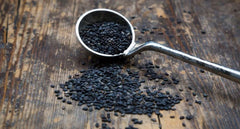Plants need micronutrients to grow. Most crops get less than 1 lb of micronutrients per acre. A lack of micronutrients in the soil can lead to deformed plants, slow growth, and reduced yield. Agricultural inputs like water and nitrogen may be lost. Micronutrient concerns drive up agricultural yields, prices, and input costs. It will cover issues including soil and plant sampling and fertilisation. Crop Insights will soon have more articles on other crops.
Micronutrients are minor nutrients. One pound of micronutrients per acre is typical. Wilting, slow-growing plants yield less money and resources due to mild nutritional deficiencies. In response to rising grain yields and input costs, growers are studying vitamin deficiencies. Plant and soil sampling will be covered in this Crop Insights topic. Micronutrient and secondary nutrient requirements for various crops will be covered in future Crop Insights articles.
It needs cation exchange sites and insoluble micronutrient compounds. pH impacts micronutrient binding and uptake by plants. Acidic soils are nutrient-dense.
Organic waste decays quickly and feeds plants. Boron is lost due to a lack of soil particle bonding. Less manure means less vitamin deficit. Overfertilized soils with too much phosphorus lack nutrients. Organic stuff is abundant in muck and peat. Copper, manganese, and zinc chelation reduce soil micronutrients (the combining of a micronutrient with an organic molecule).
Soil treatments and other crop protection methods have improved genetic stress tolerance and disease resistance. Soil health is jeopardised with each harvest. Plants, soil, and tissue lack micronutrients. This article explains how each vitamin contributes to the appearance of a plant.
Remember that micronutrients have diverse roles and motions within plants. Corn lacks iron and zinc. These nutrients are found in soil and tissue. The newest plant tissues suffer the most from depletion (assumes plants started with some supply of the nutrient but ran out as plants developed.) Aged plant tissues show this deficiency.
In vitamin-deficient fields, pH, drainage, salinity, and historical management all vary (such as manure treatments). Planning for future crop restoration is critical. Symptoms often appear too late to save the crop. Plant tissue analysis for vitamin insufficiency outperforms soil testing. Without access to soil, tissue analysis can be highly informative.
A plant study identifies crops lacking in micronutrients. Analyzing a plant's nutritional content can detect problems before they become symptoms. Throughout the growing season, collect plant samples and treat plants suspected of vitamin deficiencies. Vitamin insufficiency affects plant yield, says research.
Because plant nutrient content varies by crop, age, and geography, it is critical to follow your plant diagnostic laboratory's sampling guidelines. Pick randomly from the issue field to get a representative sample. Preferably non-dusted, non-soiled and non-fire Compare symptomless plants to those with nutritional deficits. It's tough to evaluate the results without expert help.
Our Products:
Give your plants best micronutrient supplements in town. Geolife brings you the best products to cherish and celebrate your garden and plants.
- Geolife Nano Combi
- Geolife Nanomeal Start
- Geolife Nano Fe Nano Technology Micro Nutrient Fertilizers
….and many more. Visit our website to find the best fit for your veggie paradise.





